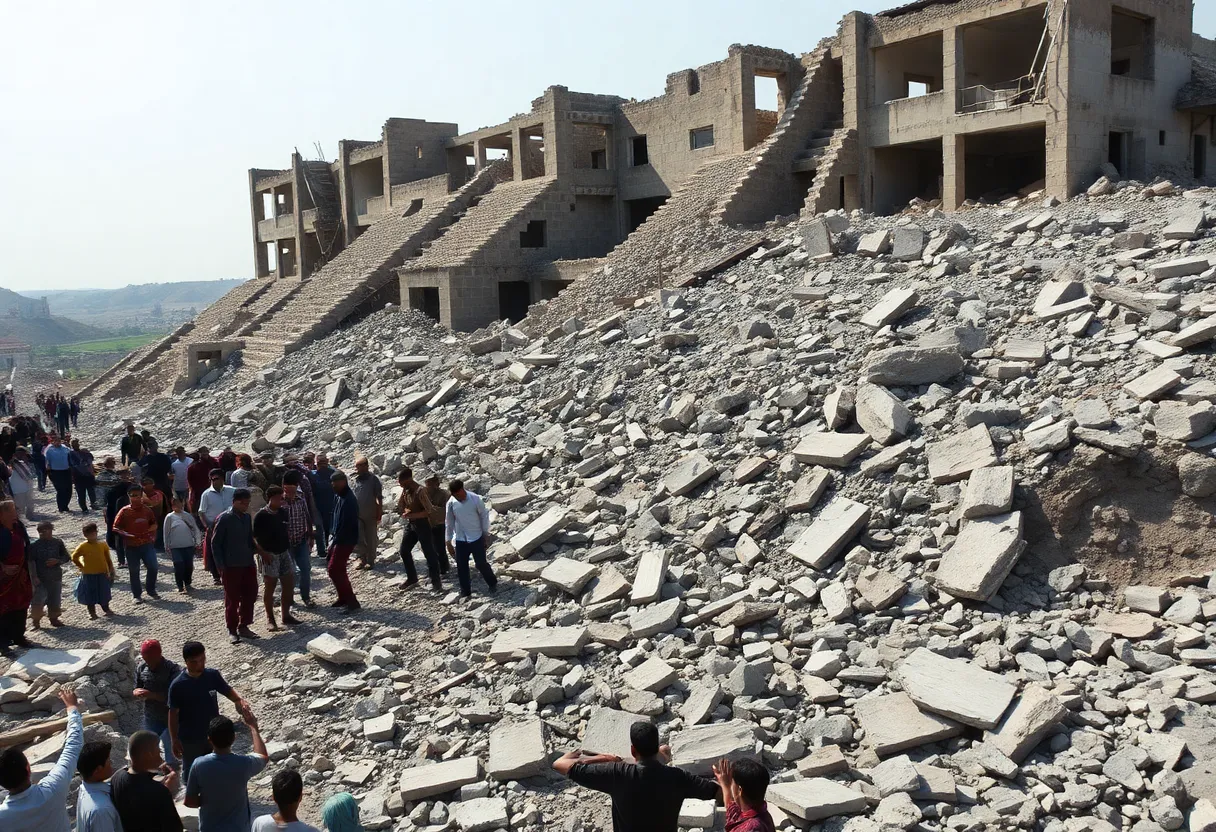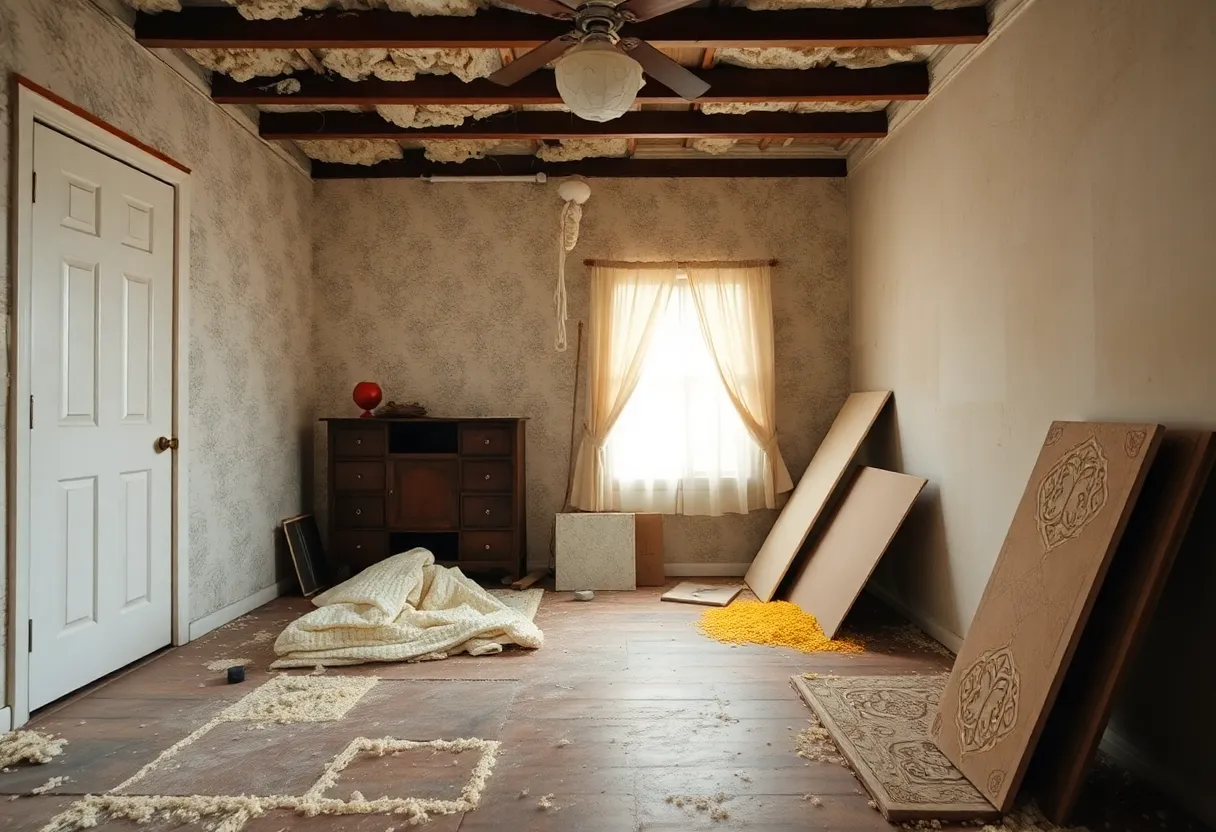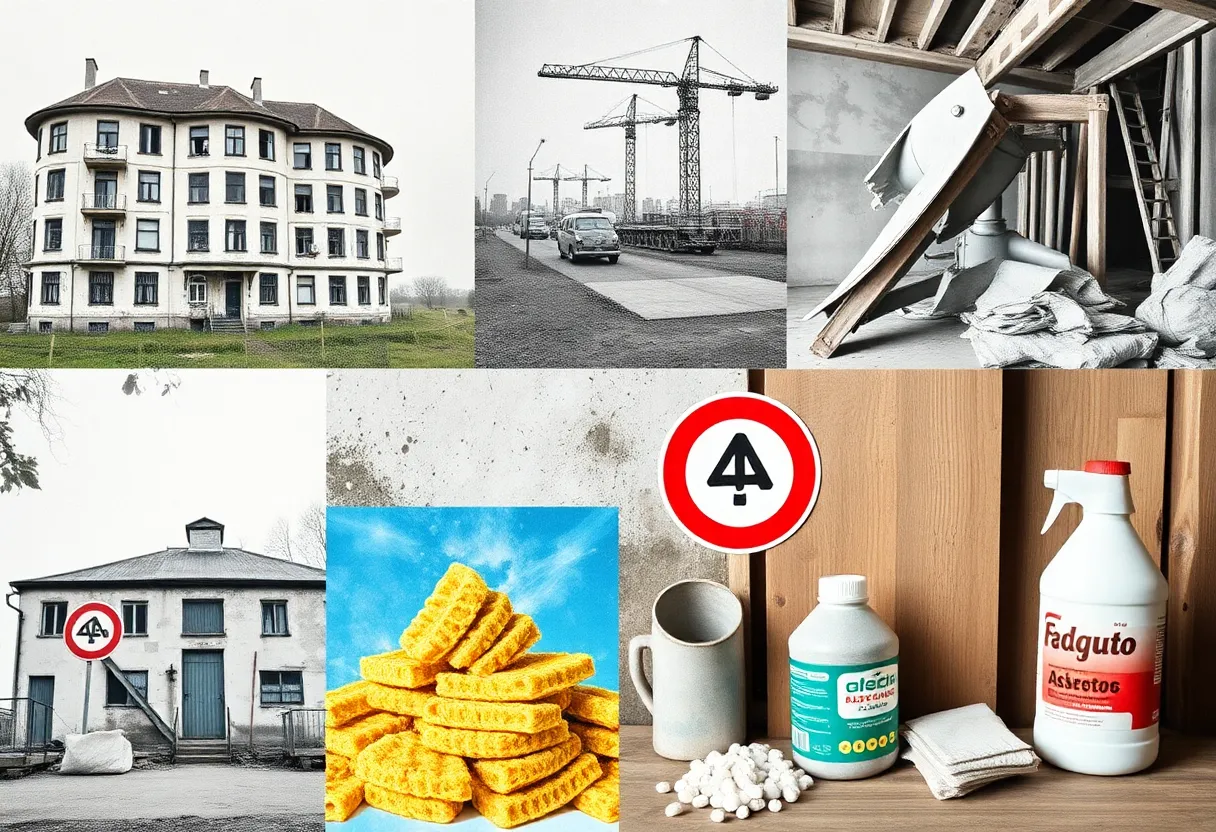News Summary
The ongoing conflict in Gaza has unveiled a serious public health threat: asbestos exposure. With millions of tons of rubble potentially contaminated, health experts warn of the long-term implications for lung health, particularly for children. As recovery efforts fall short and awareness remains low, the region faces a looming health crisis that mirrors past events like the aftermath of 9/11.
Asbestos Crisis Emerges in Gaza Amid Ongoing Conflict
The devastating military campaign in Gaza has unleashed a hidden but deadly threat that could haunt the region for decades: asbestos. This notorious mineral, known for its toxic fibers that become airborne when disturbed, has raised alarms among health experts as its effects on the population could be catastrophic.
The Menace of Asbestos
Asbestos exposure is a well-known risk factor for serious health conditions such as lung cancer and mesothelioma. Unfortunately, these diseases often develop silently over a prolonged period, making early detection and intervention challenging, if not impossible. The World Health Organization identifies mesothelioma as one of the most aggressive forms of lung cancer, taking anywhere from 20 to 60 years to manifest after exposure.
Despite being banned in more than 68 countries, including Israel in 2011, asbestos remains pervasive in older buildings in Gaza. The urban refugee camps that were established during the tumultuous years of 1948-49 are particularly notorious for containing roofing materials that contain this harmful substance.
Staggering Estimates from UNEP
As of October 2024, the United Nations Environment Programme has estimated that as much as 2.3 million tons of rubble in Gaza could be potentially contaminated with asbestos. Professor Bill Cookson from the National Centre for Mesothelioma Research has characterized the rubble in Gaza as a “very toxic environment,” emphasizing the heightened health risks to anyone inhabiting or working amidst this debris.
Children at Greater Risk
The implications of asbestos exposure are not limited to adults. Children, in particular, face alarming risks. Studies have shown that even minimal exposure to asbestos fibers may lead to long-term health consequences, likely shadowing them throughout their lives. In the densely populated area of Gaza, home to roughly 2.1 million people squeezed into just 365 square kilometers, avoiding inhalation of these toxic fibers becomes an uphill battle.
The Larger Public Health Crisis
The ongoing military operations and their immediate threats overshadow the looming health crisis. Many residents of Gaza are not aware of the dangers posed by asbestos exposure, leaving them potentially unprotected against the risks that lie in the dust and debris of their war-torn environment. The chaotic conditions complicate efforts to manage asbestos risks effectively, making matters worse.
Small inhalations of asbestos fibers can inflict severe scarring within the lungs and potentially lead to asbestosis and other serious respiratory diseases. The debris generated in the wake of military offensives poses further threats, heightening the risks of respiratory infections, pneumonia, and aggravated asthma.
Comparisons to the Post-9/11 Scenario
There are unsettling parallels to be drawn between the asbestos exposure in Gaza and the situation in New York following the September 11 attacks. Both scenarios have relevant implications for long-term health risks. The World Trade Center Health Program has documented an alarming number of cancer diagnoses and fatalities among those exposed to toxic dust, raising questions about the future health of the residents of Gaza.
Long Road to Recovery
The cleanup of asbestos-laden debris in Gaza is expected to take an astonishing 21 years and cost around $1.2 billion. The destruction of medical infrastructure due to the ongoing conflict presents a dire challenge to health authorities and workers in Gaza, who are already stretched thin. The humanitarian situation remains dire, as many residents lack awareness about the health impacts associated with asbestos exposure.
The Future of Public Health in Gaza
The health implications of military conflicts extend beyond immediate casualties. The long-term challenges posed by asbestos and other toxic exposures represent an emerging public health crisis that requires urgent attention. As the armed conflict continues, the potential health impact of war-related chemical exposure on civilians remains under-researched compared to military personnel. Concerns regarding heavy metals and pollutants further threaten the groundwater supply, compounding the humanitarian crisis.
As Gaza grapples with the immediate threats of conflict, the shadows of asbestos loom large, presenting a sobering reminder of the long-term consequences of war on public health.
Deeper Dive: News & Info About This Topic
HERE Resources
RREEF Takes Legal Action Over Asbestos and Lead Disturbance at Iconic Embarcadero Centre
Innovative Support for Mesothelioma Patients: A Comprehensive Approach
Coroner Investigates Death of RAF Veteran Linked to Asbestos
Facing the Reality of Mesothelioma: Support Groups Offer a Lifeline
Revolutionary Breakthroughs in Mesothelioma Treatment in 2025!
Surge in Survival Rates: New Innovations in Pleural Mesothelioma Treatments
Castleford Family Seeks Information on Miner’s Asbestos Death
Scotland Faces Rising Risks from Asbestos in Water Pipes
Controversial Demolition of Patten Recreation Center Sparks Investigation
Khataraha Shucaaca Asbestos ee Gaza: Halista Caafimaad



















